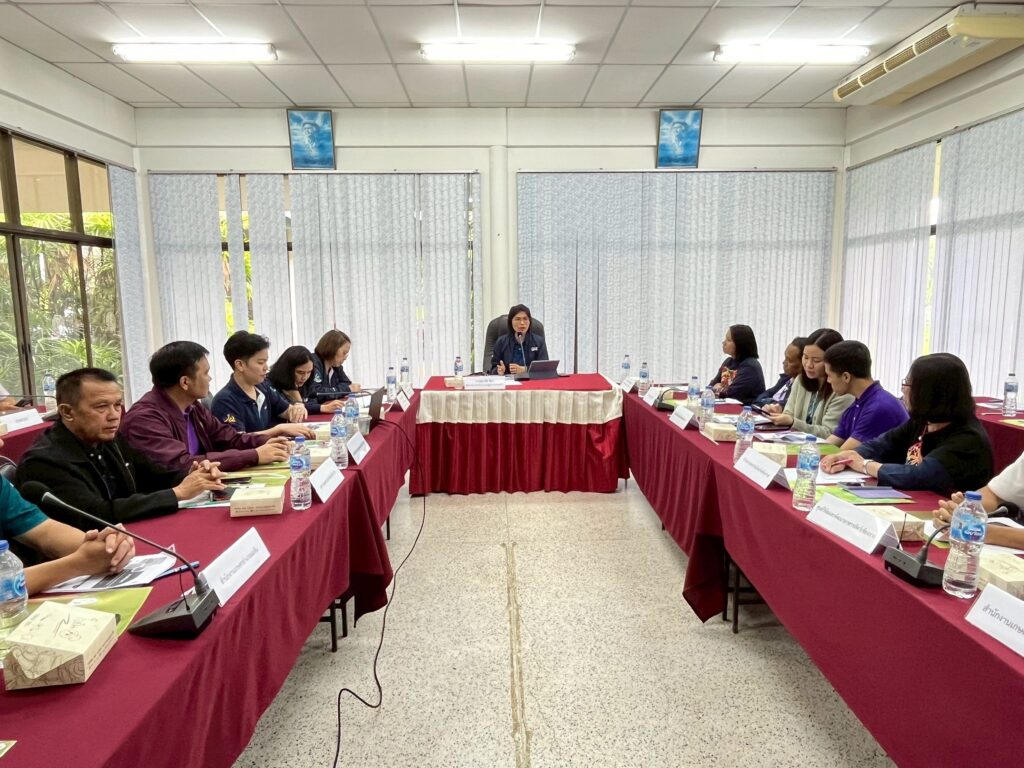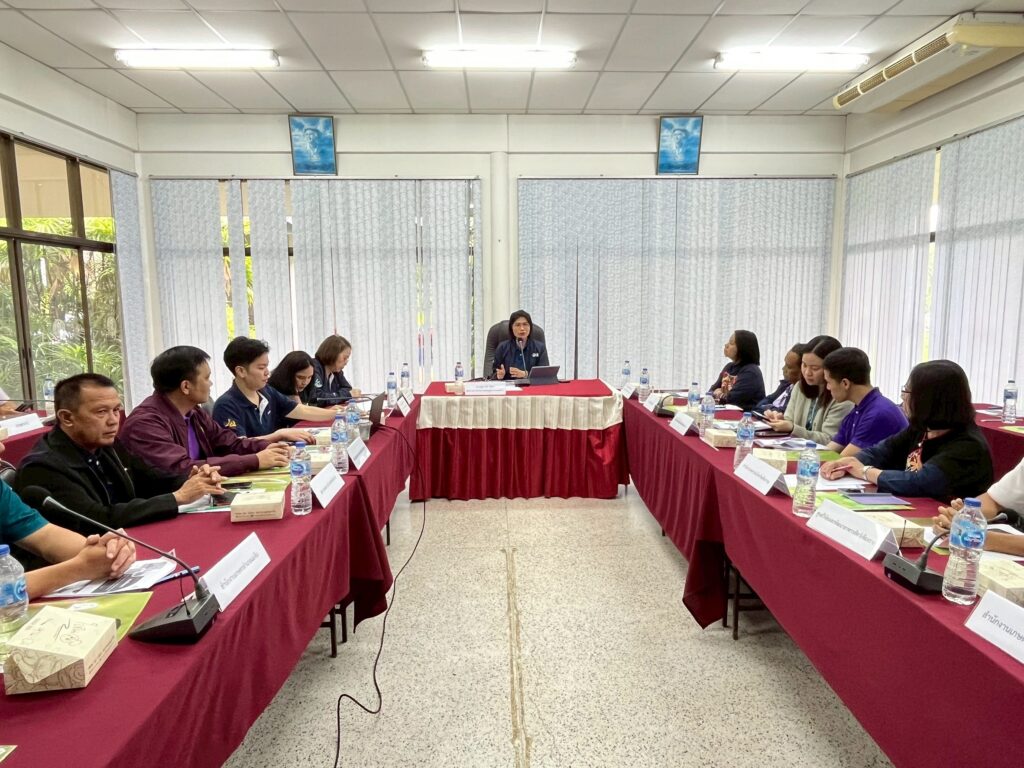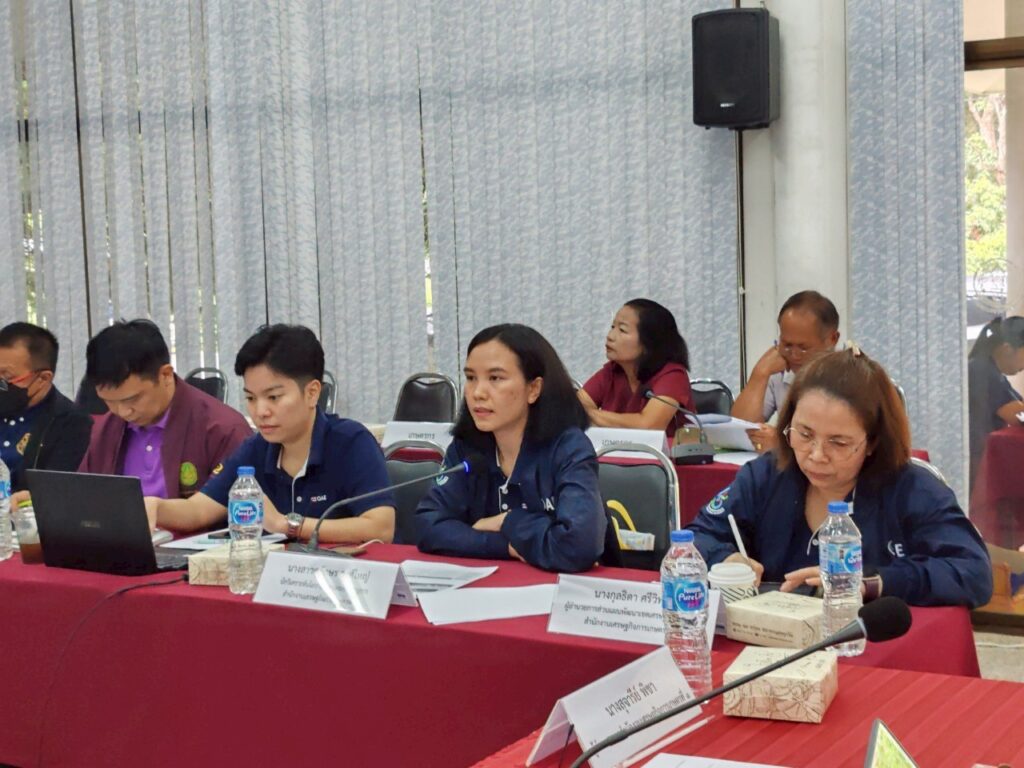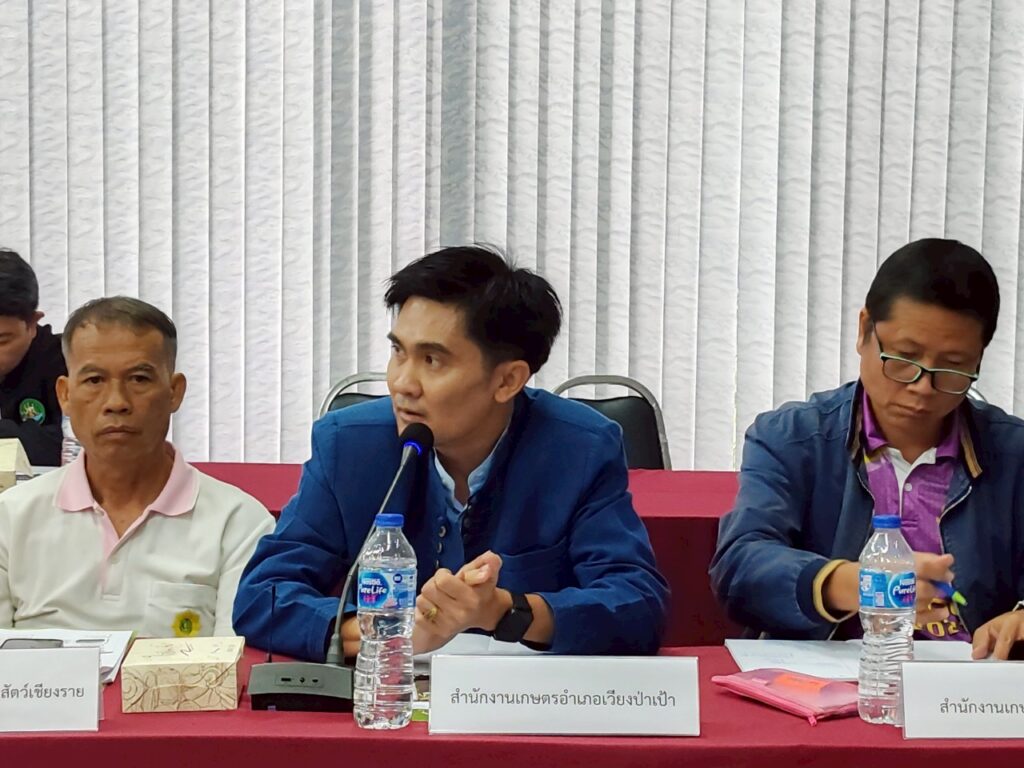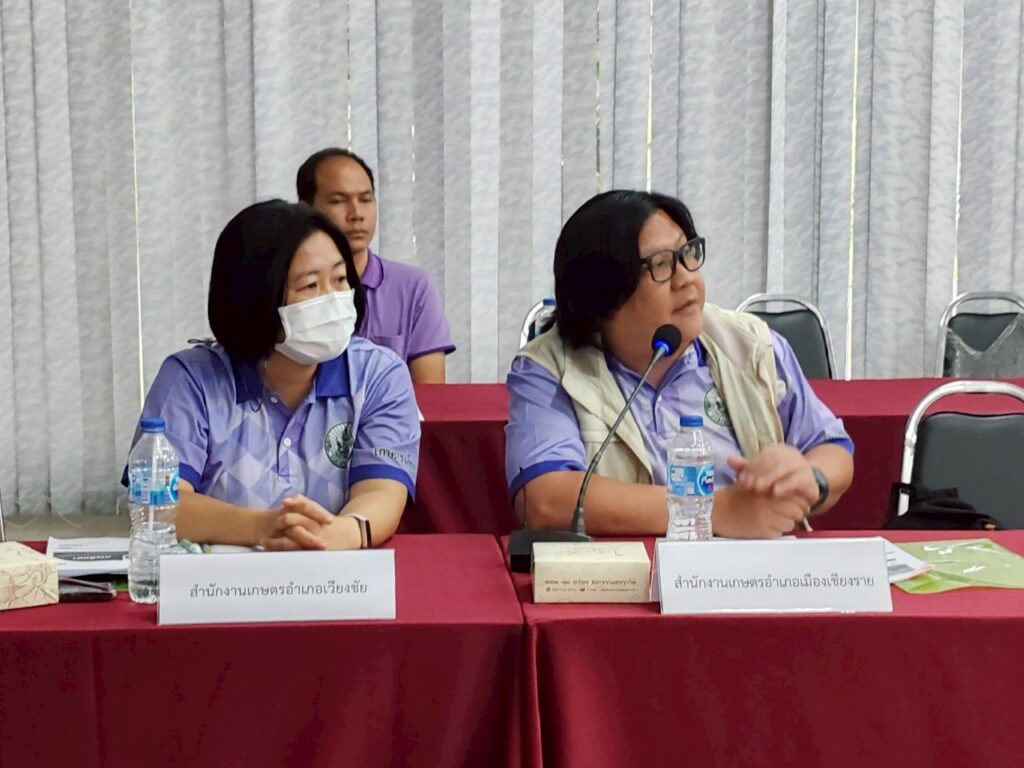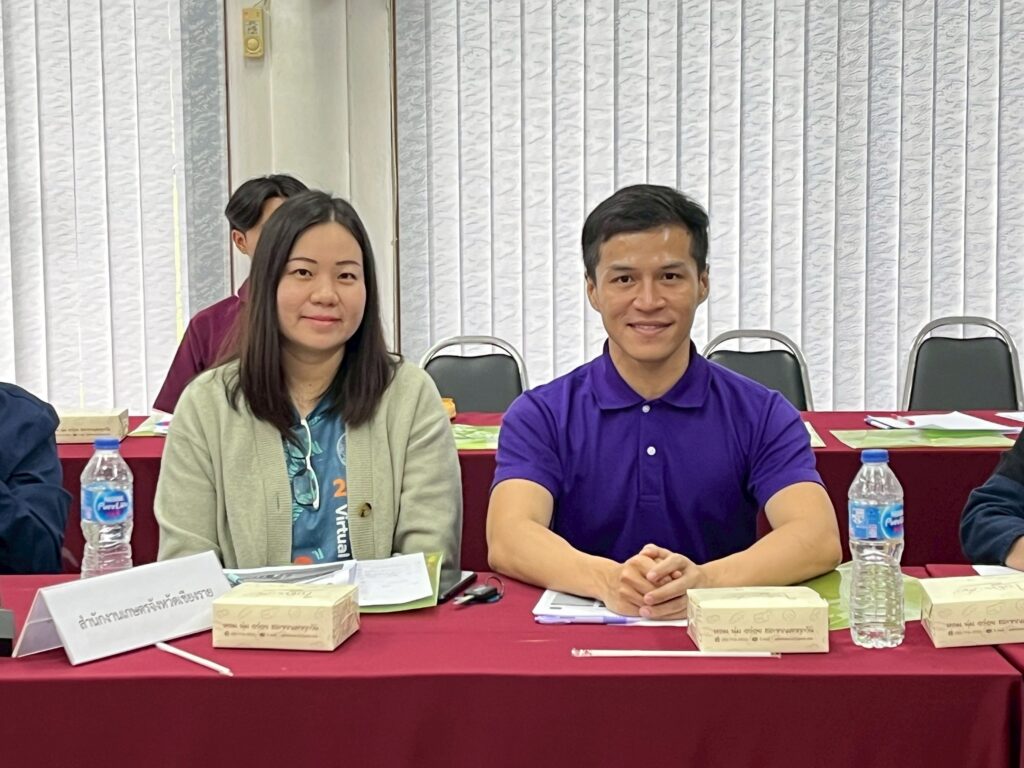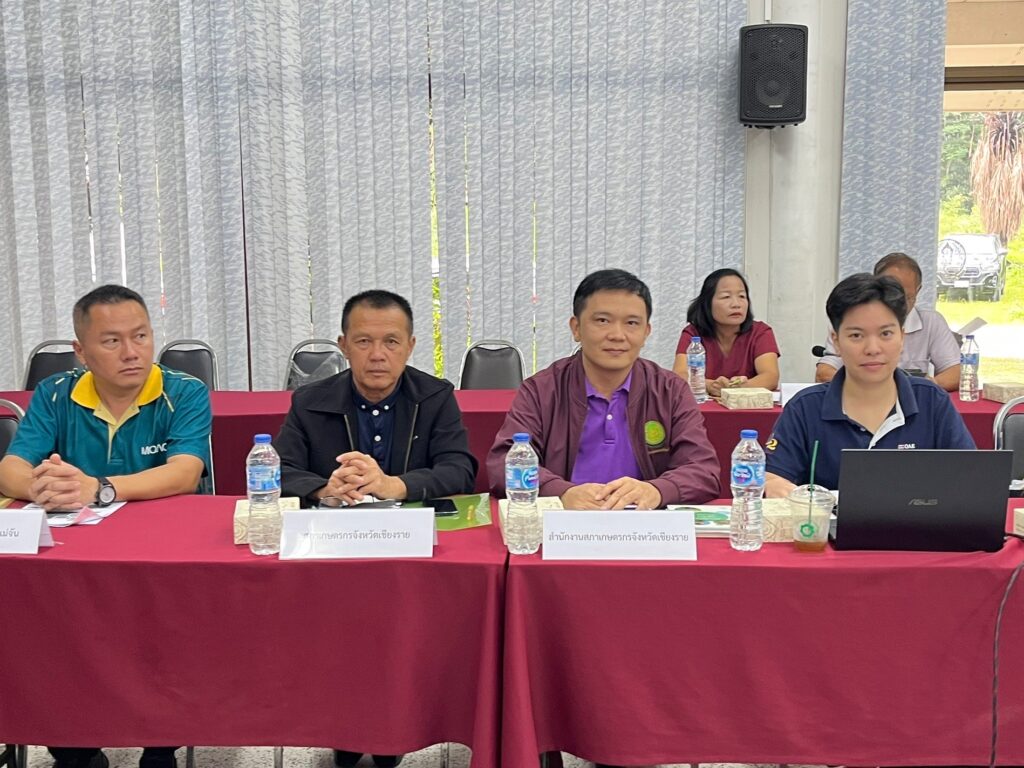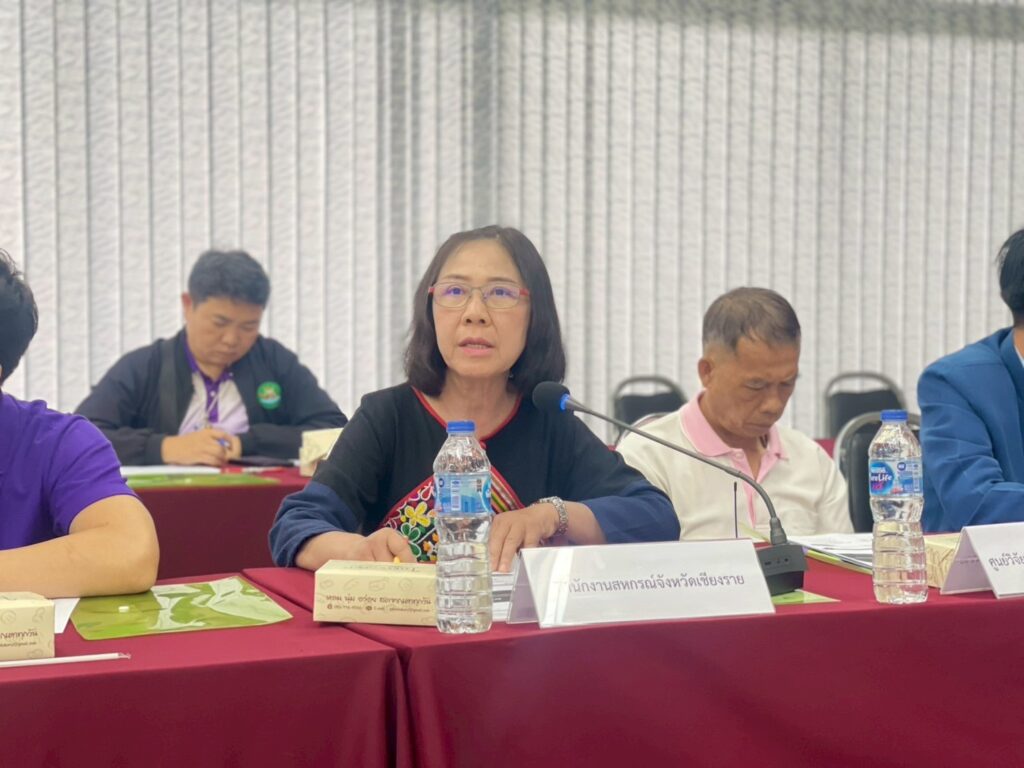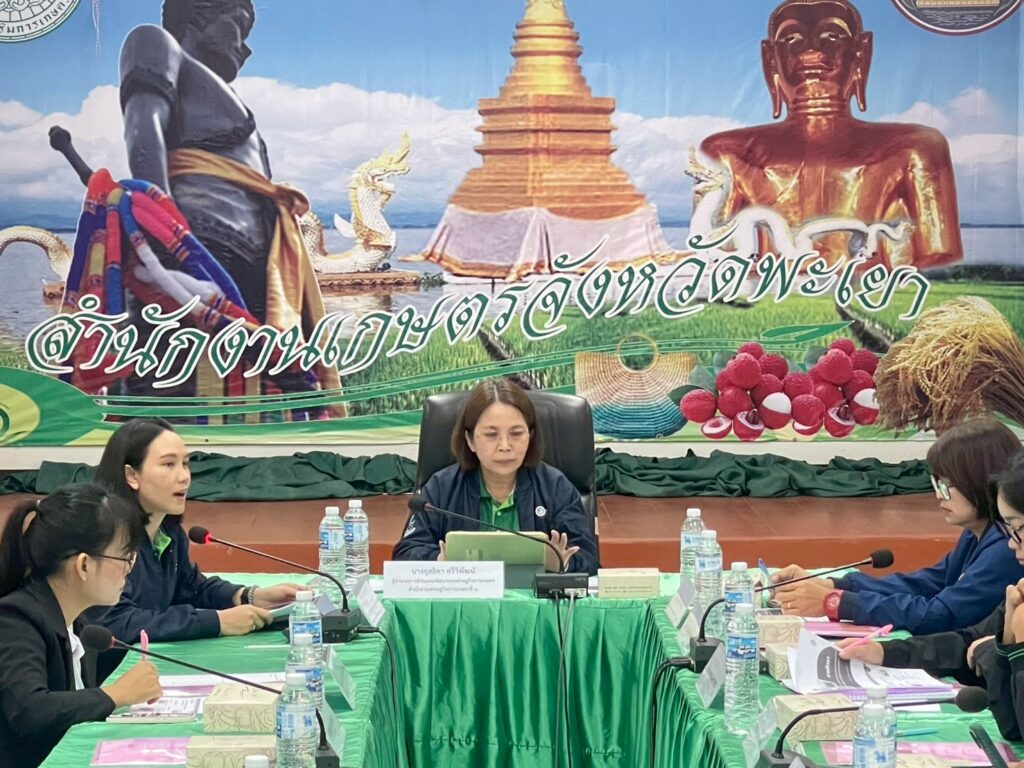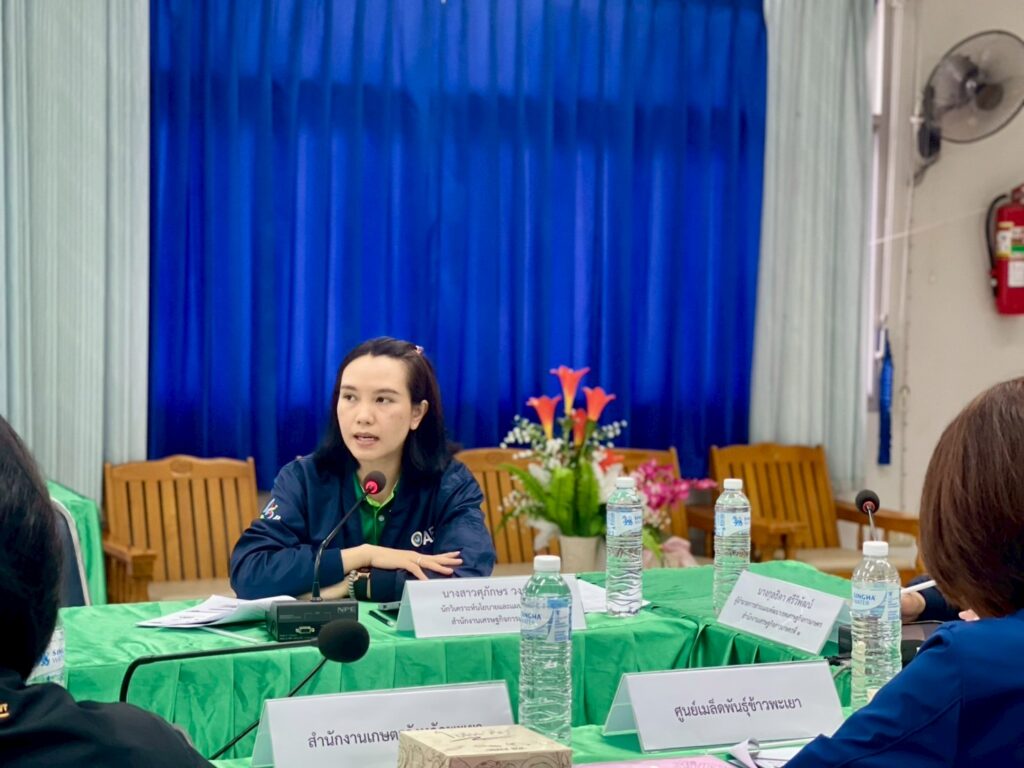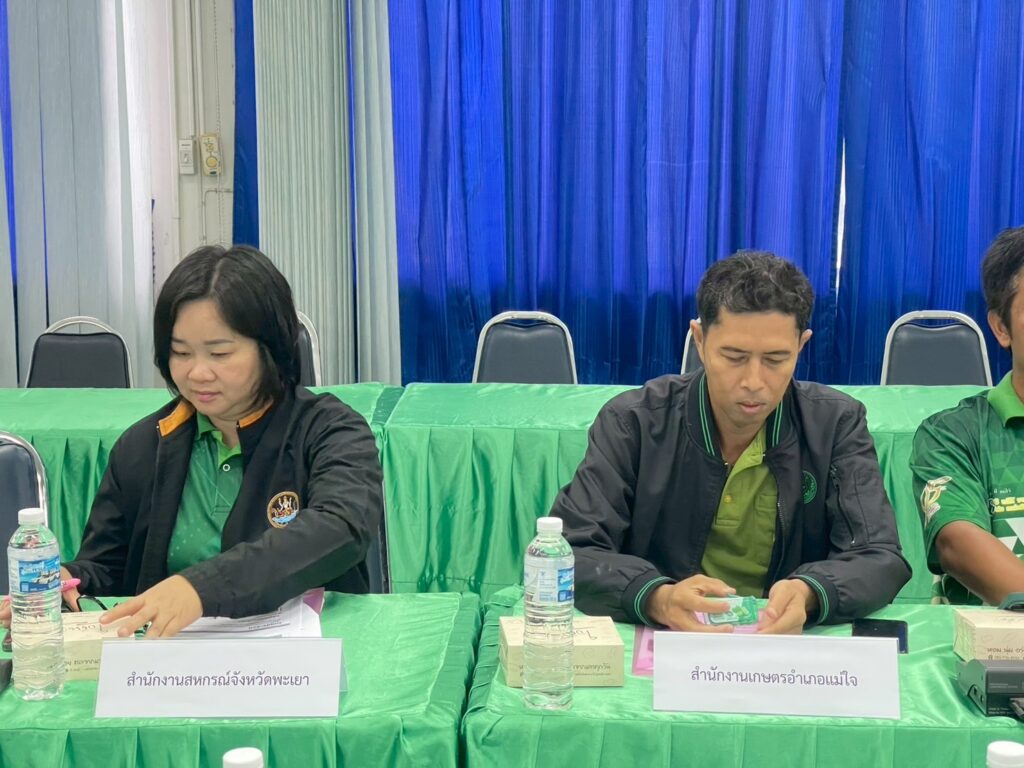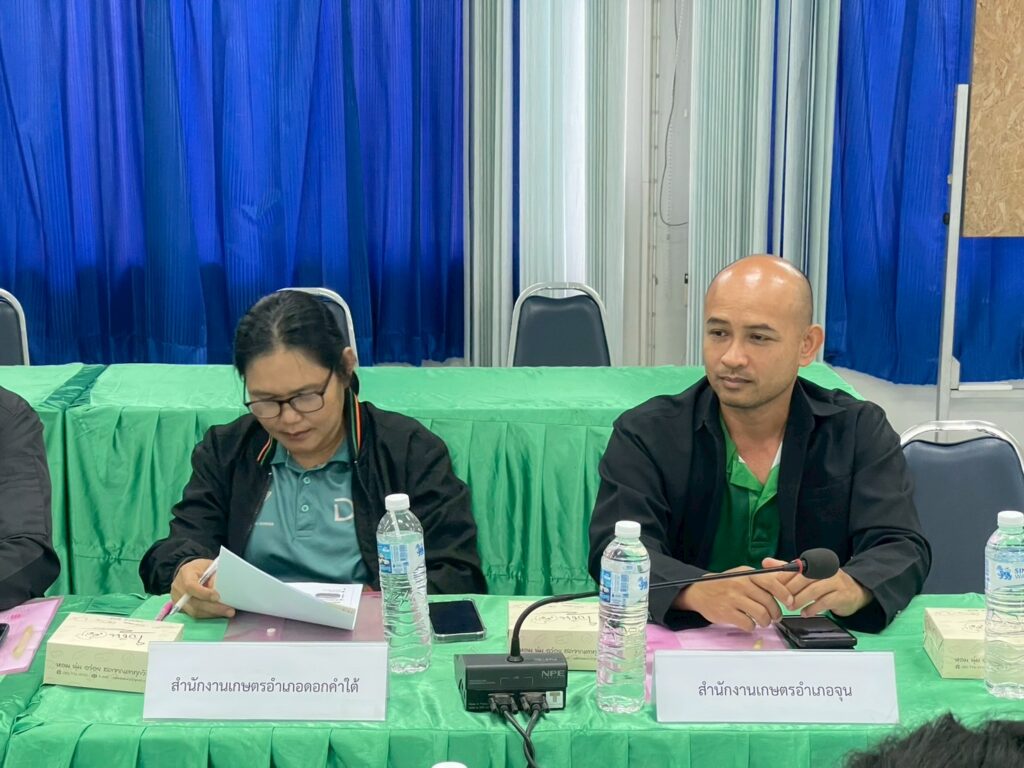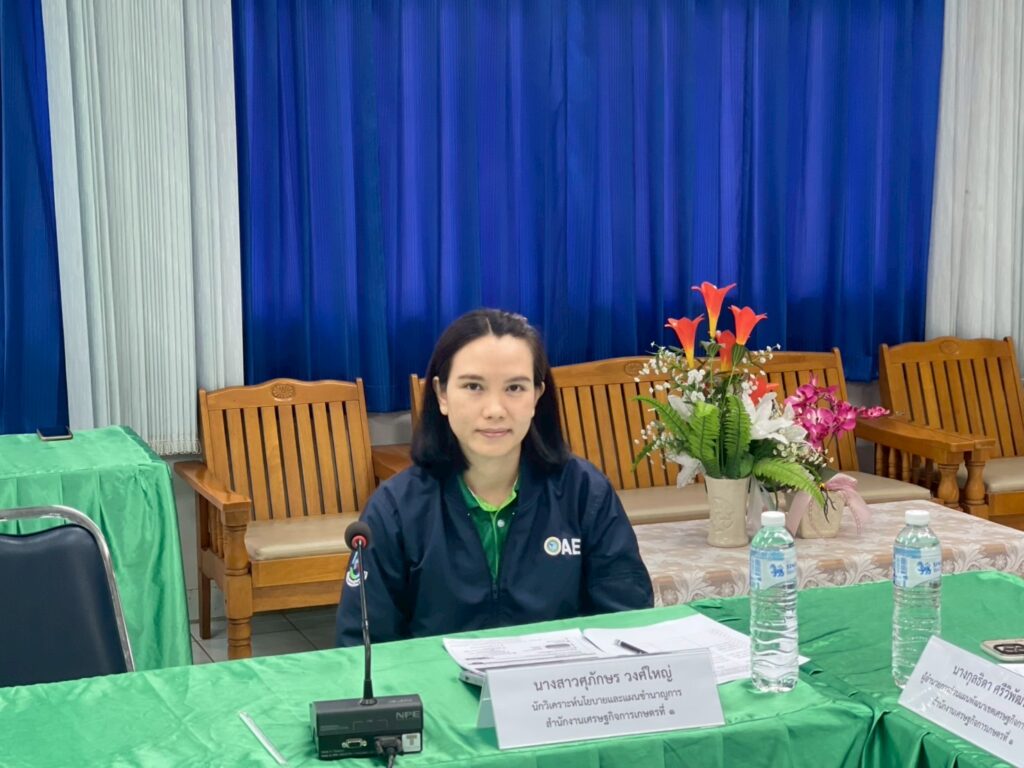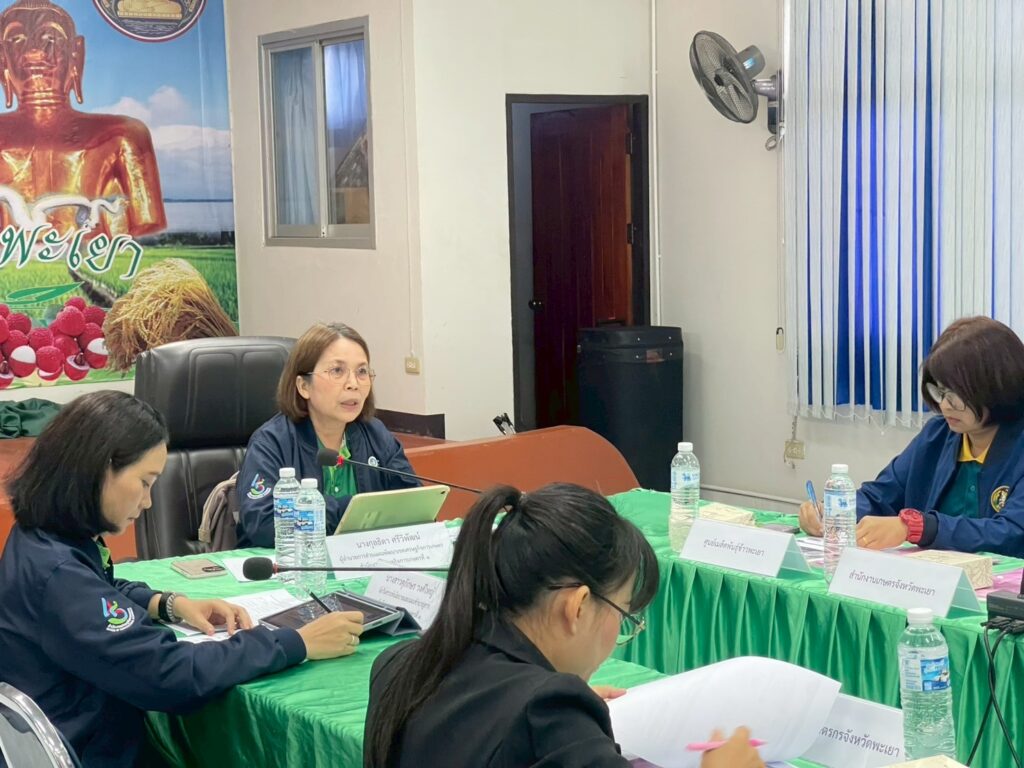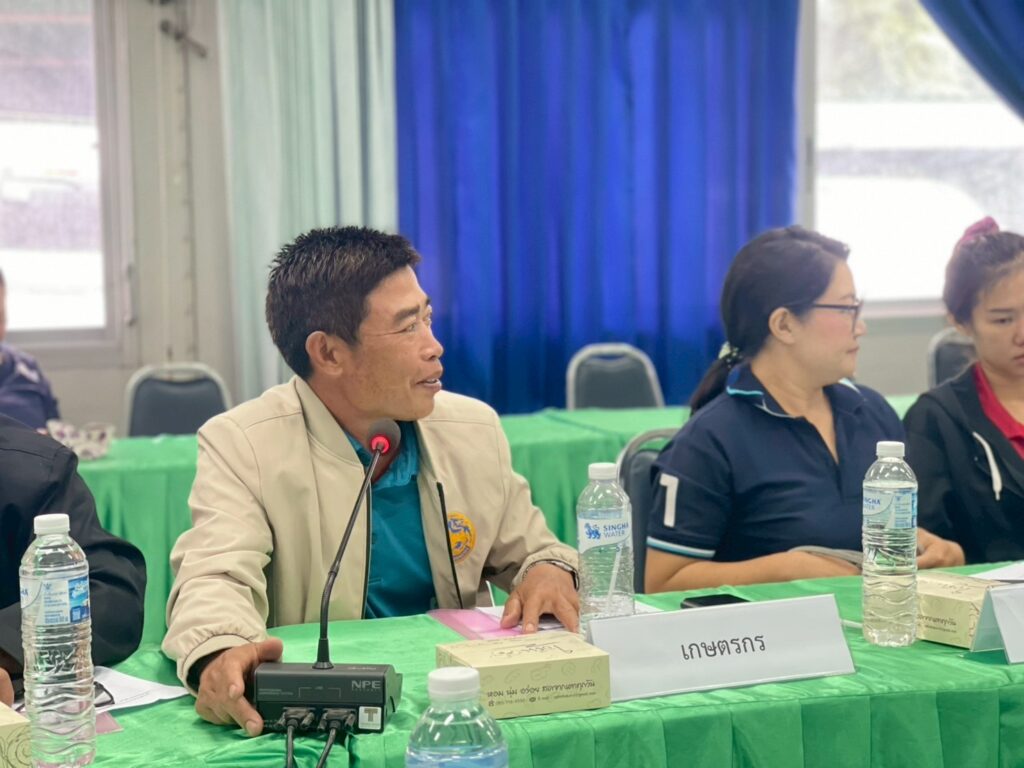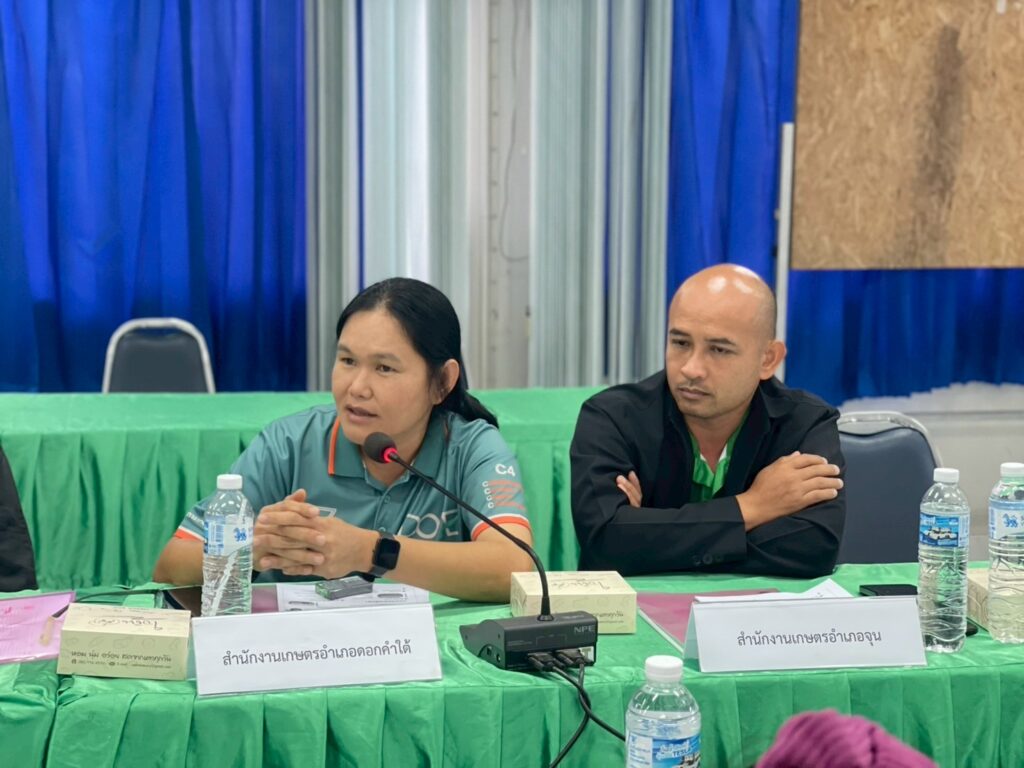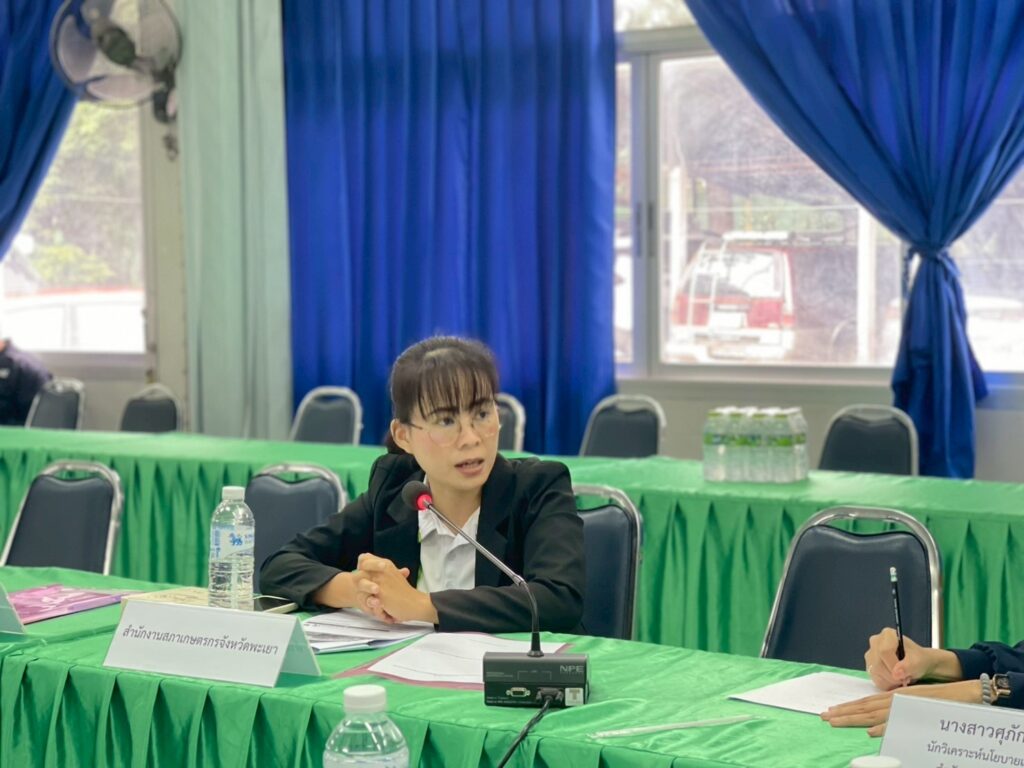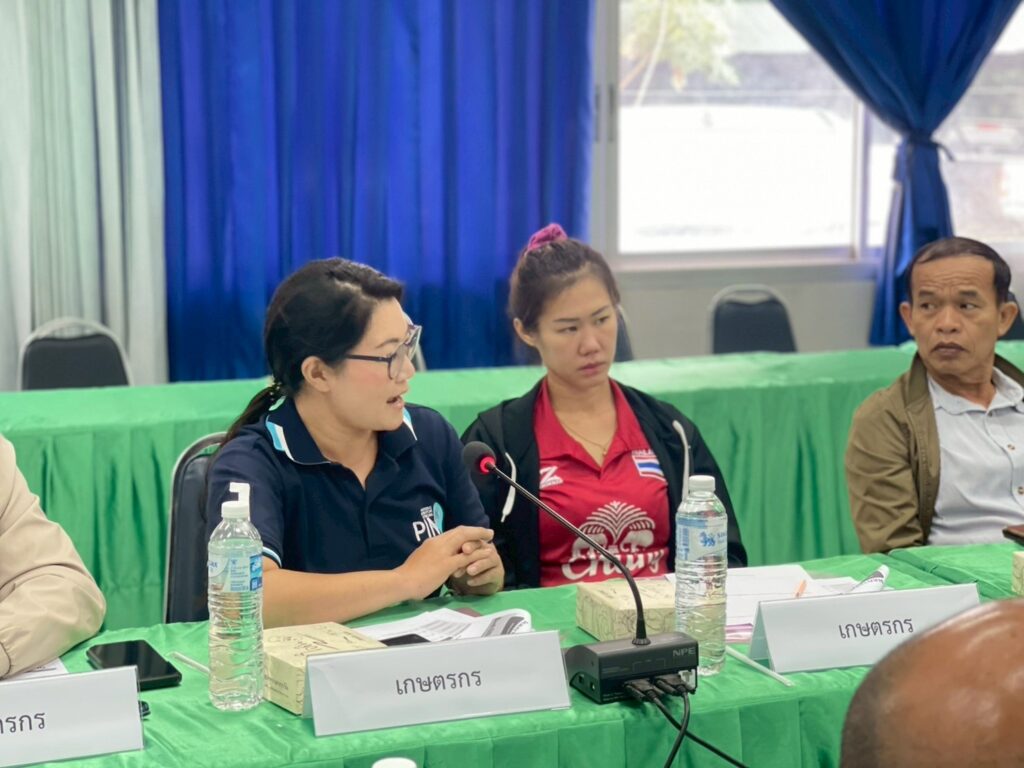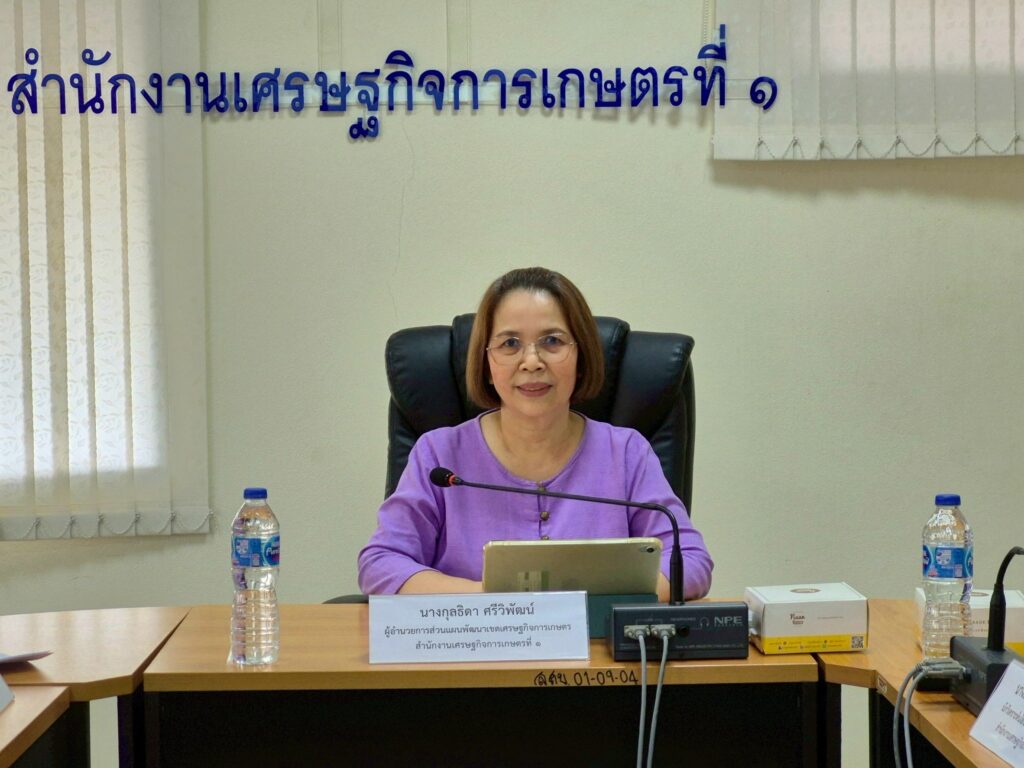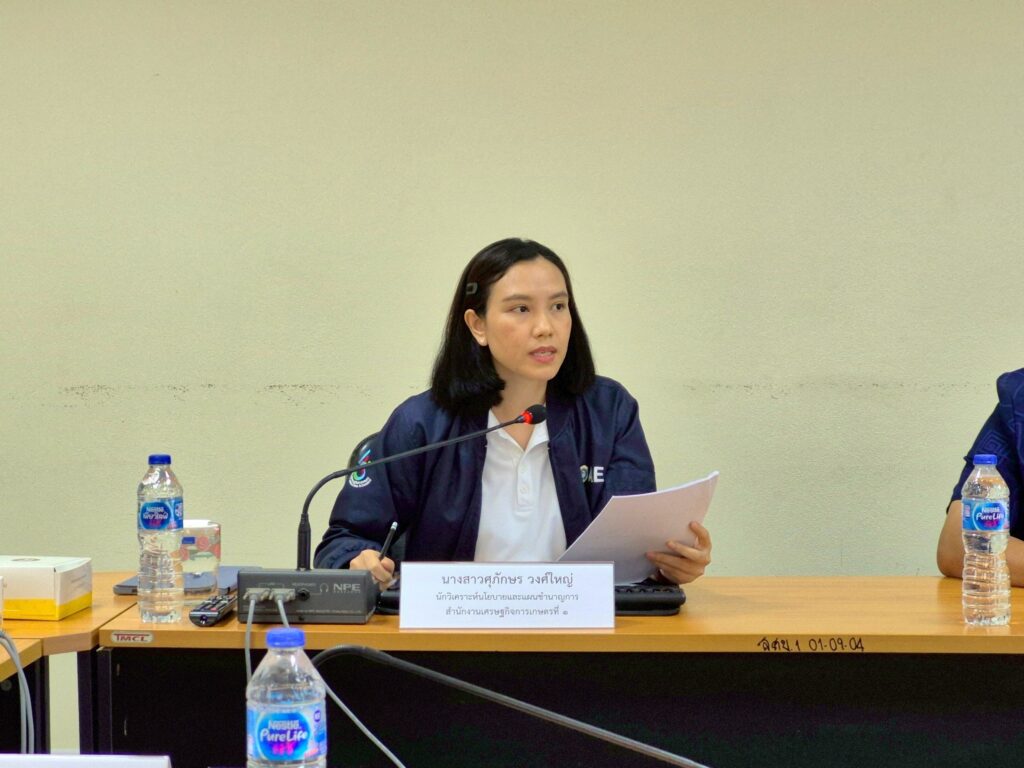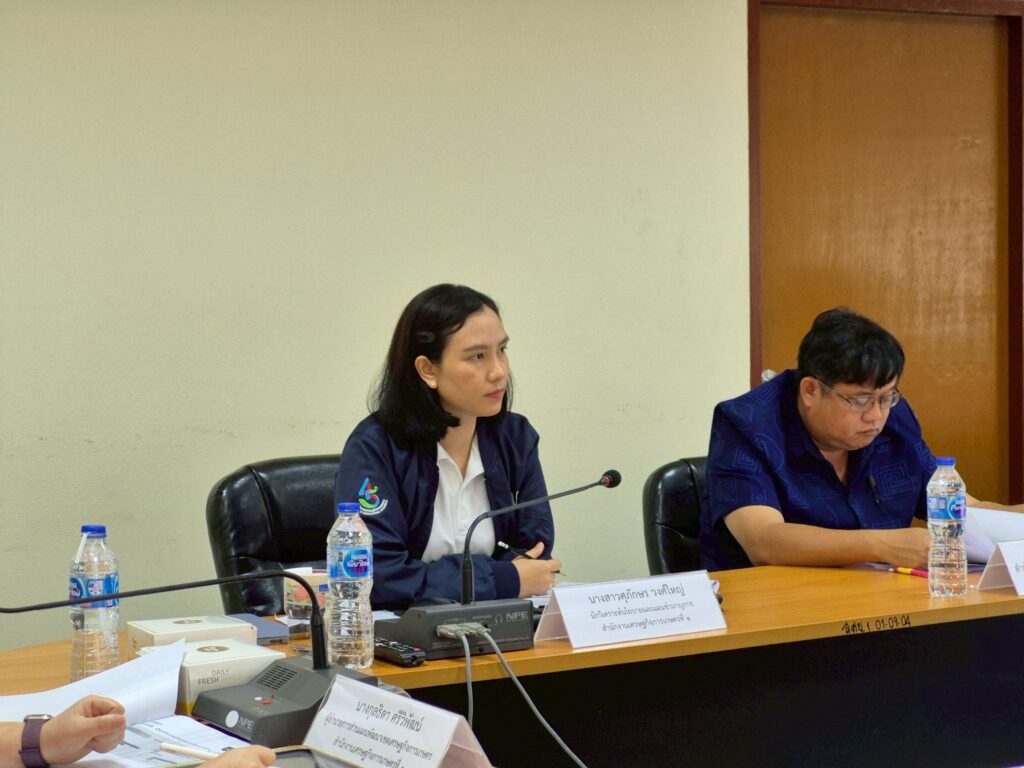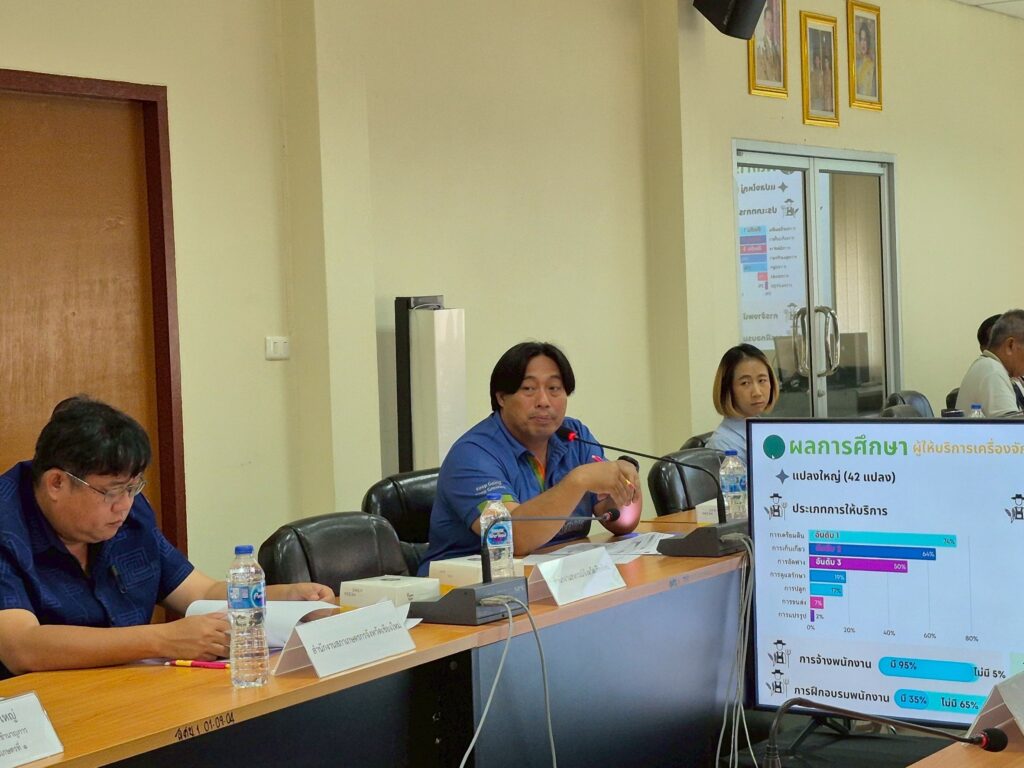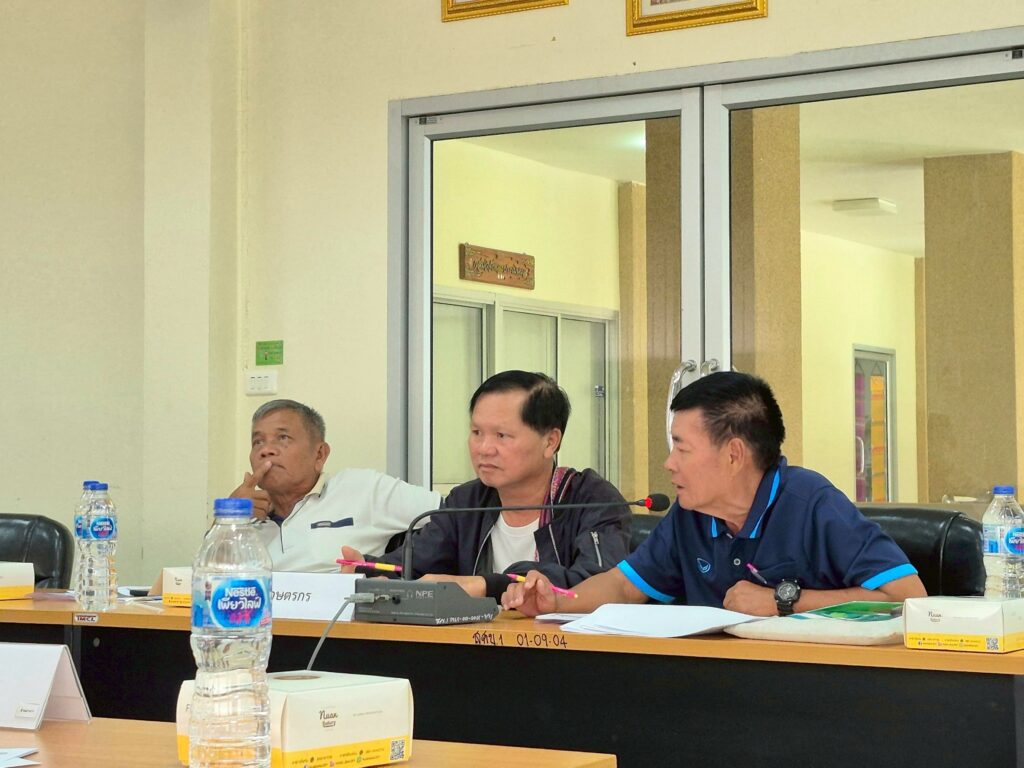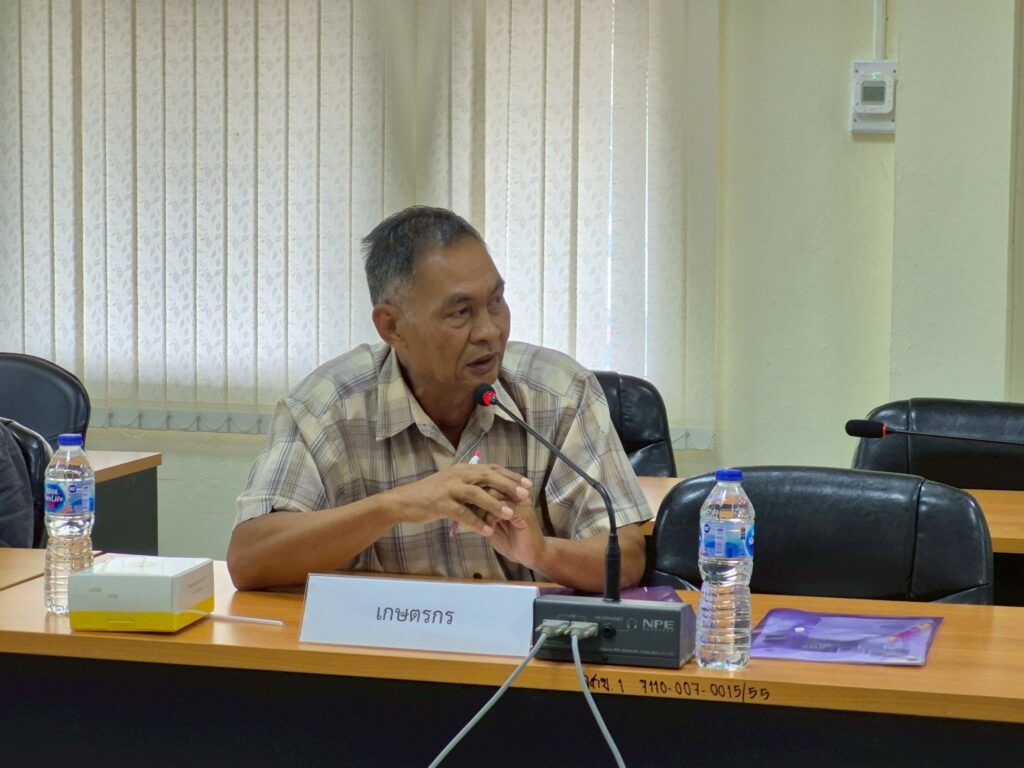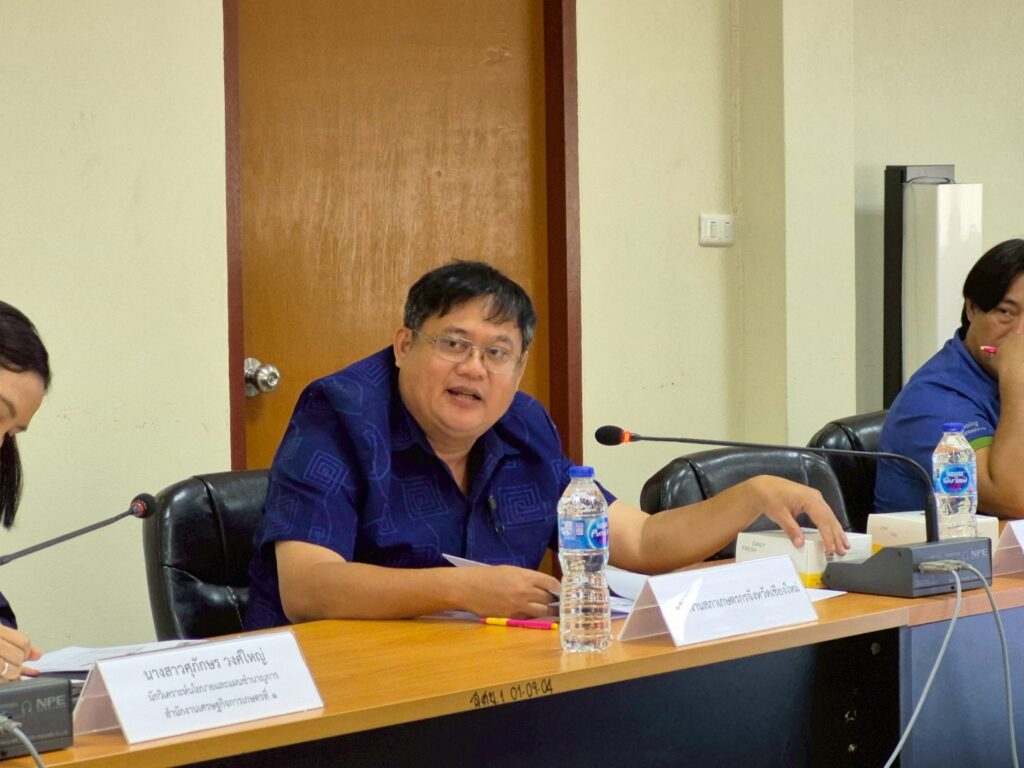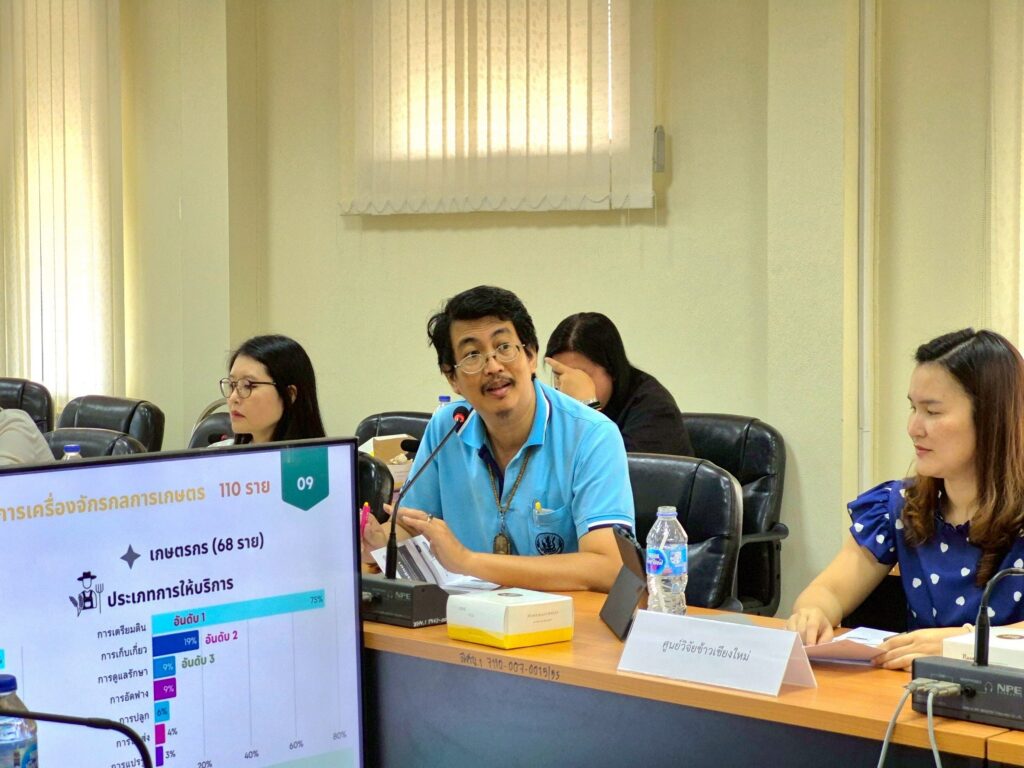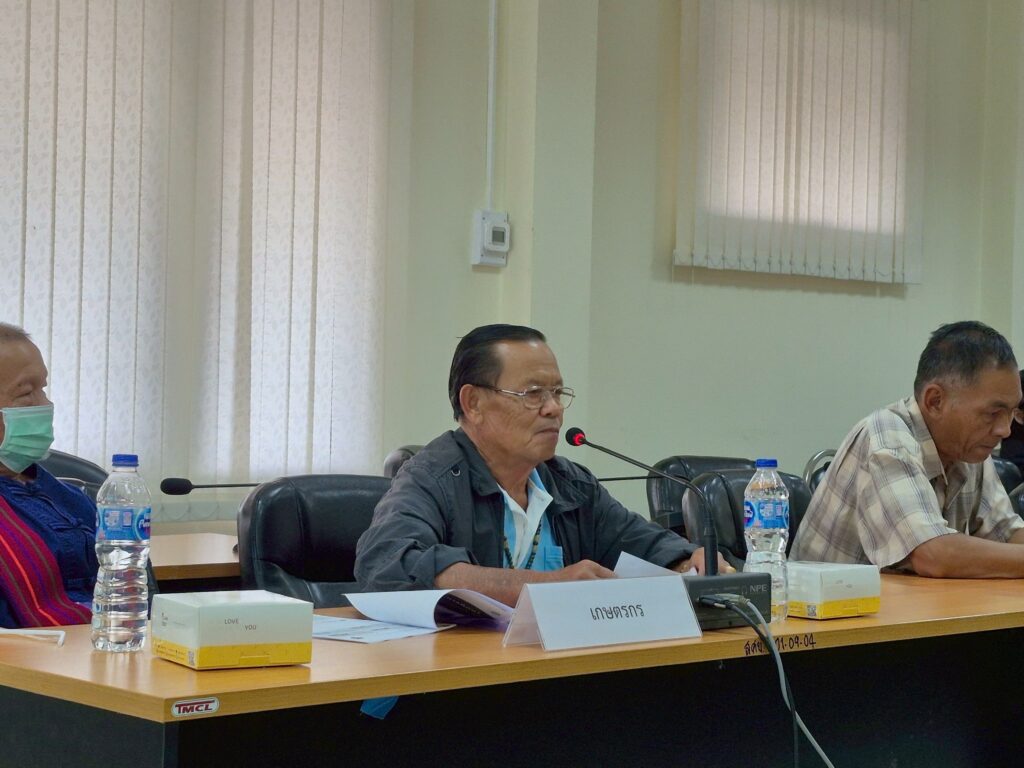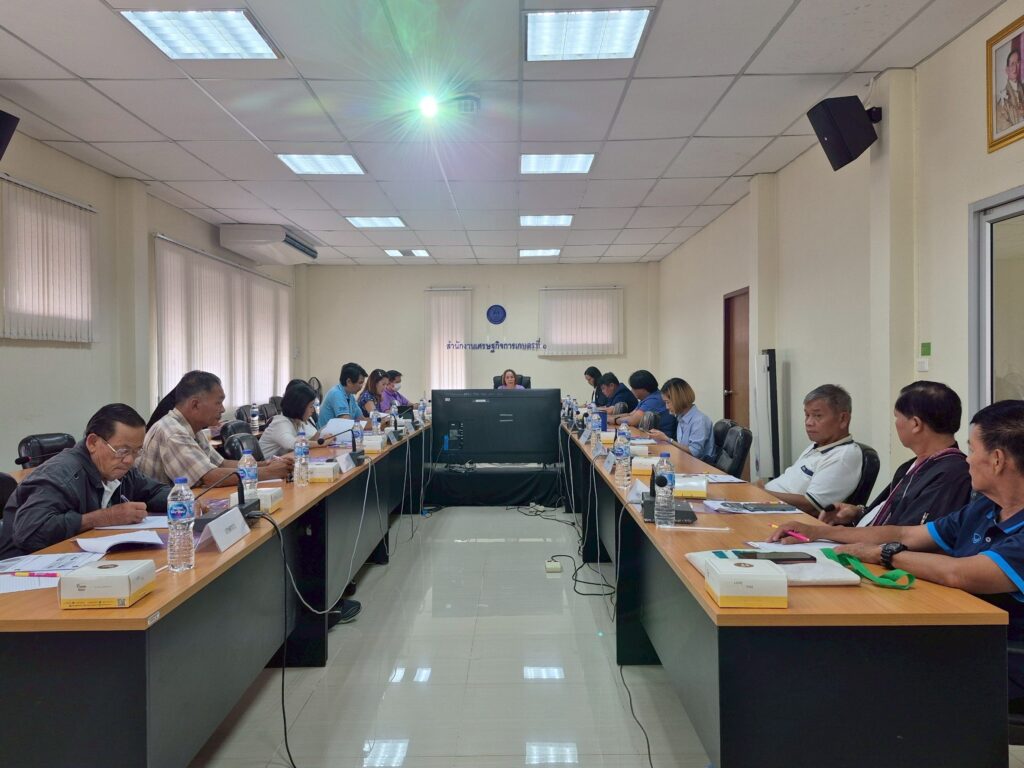From July 22-25, 2025, the Office of Agricultural Economics Zone 1 held a focus group meeting on “Strategies for Developing Farmers and Farmer Organizations into Agricultural Service Providers”. The objective was to gather opinions and suggestions on the development of agricultural services from relevant stakeholders, to ensure that the study’s results could be genuinely utilized in the areas.
On July 22, 2025, Ms. Sucharee Picha, Director of the Office of Agricultural Economics Zone 1, chaired the meeting in Chiang Rai Province. On July 23 and 25, 2025, Ms. Kunthida Srivipat, Director of the Agricultural Economic Zone Development Division, chaired the meetings in Phayao and Chiang Mai provinces, respectively. Agencies under the Ministry of Agriculture and Cooperatives, educational institutions, and farmers participated in expressing their opinions and suggestions on the study’s findings.
During the meetings, Ms. Supakorn Wongyai, Plan and Policy Analyst, professional level presented the initial findings from a survey of 341 samples. These samples included Collaborative Farm Upgrade, farmers providing agricultural machinery services, and customer.
The study revealed that most farmers have a demand for agricultural services, and this demand is likely to increase. This is because these services can boost production efficiency, provide high precision, and save time in various activities, ultimately reducing production costs. However, the study also found that current service provision in the area is insufficient to meet demand. This shortage stems from issues in machinery management and a lack of skilled labor, leading to inefficient service delivery.
Therefore, three key approaches were proposed to develop farmers and farmer organizations into professional agricultural service providers:
1.Developing skills and knowledge in agricultural services.
2.Promoting the full utilization of agricultural machinery.
3.Strengthening agricultural service businesses. These approaches aim to enhance the potential of farmers and farmer organizations as agricultural service providers, thereby creating a balance between the demand for and provision of agricultural services moving forward.
